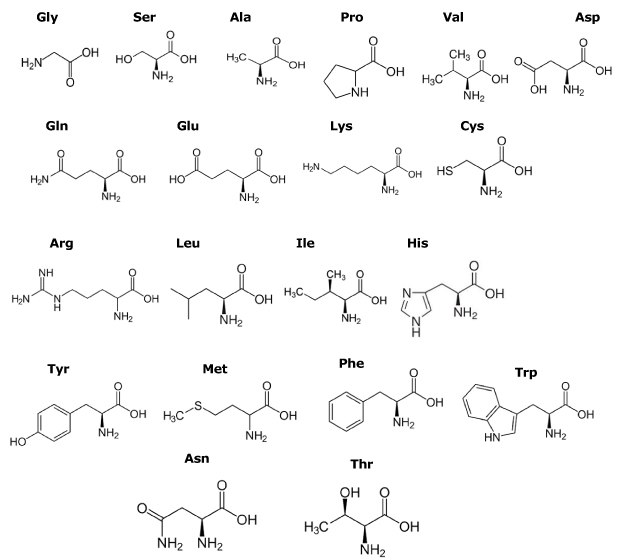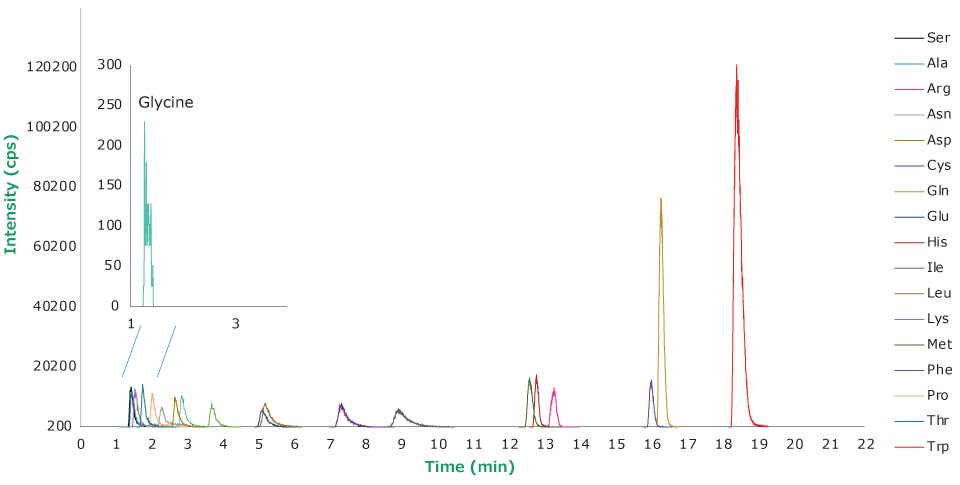LC-MS/MS Analysis of Underivatized Amino Acids on Supel™ Carbon LC Column
Amino acids are the building blocks of proteins and peptides in biological systems. Amino acids have also been used as supplements to support health and as indicators for certain diseases. The challenge with amino acids analysis lies in the wide- ranging polarities across all 20 amino acids (Figure 1). Due to this complexity, amino acid analysis methods in the past have relied on derivatization of amino acids; however, derivatization can lead to further complexity due to the presence of derivatized/underivatized amino acids and interferences from the derivatizing reagent itself.
This application outlines an LC-MS/MS method (Table 1) for analyzing all 20 amino acids, without derivatization, utilizing the Supel™ Carbon LC column. All 20 amino acids are retained on the column under reversed phase conditions, with good peak shape.
Read more:

Figure 1.Structures and three letter codes of amino acids.

Figure 2.Separation of 20 underivatized amino acids by LC-MS/MS at various concentrations (Table 4).
Conclusion
This application demonstrated the effectiveness of the Supel™ Carbon LC column in the resolution of amino acids without the need for a derivatization reagent. Qualitative analysis of amino acids is typically done with specialty, silica-based columns, ion exchange columns, or normal phase columns. However, by utilizing tandem MS/ MS detection, analyses of amino acids can be accomplished on Supel™ Carbon LC column with fast run times compared to most commercial approaches. Due to porous graphitic carbon’s unique ability to discriminate three- dimensional differences between compounds, leucine and isoleucine can be resolved with exceptional resolution
如要继续阅读,请登录或创建帐户。
暂无帐户?